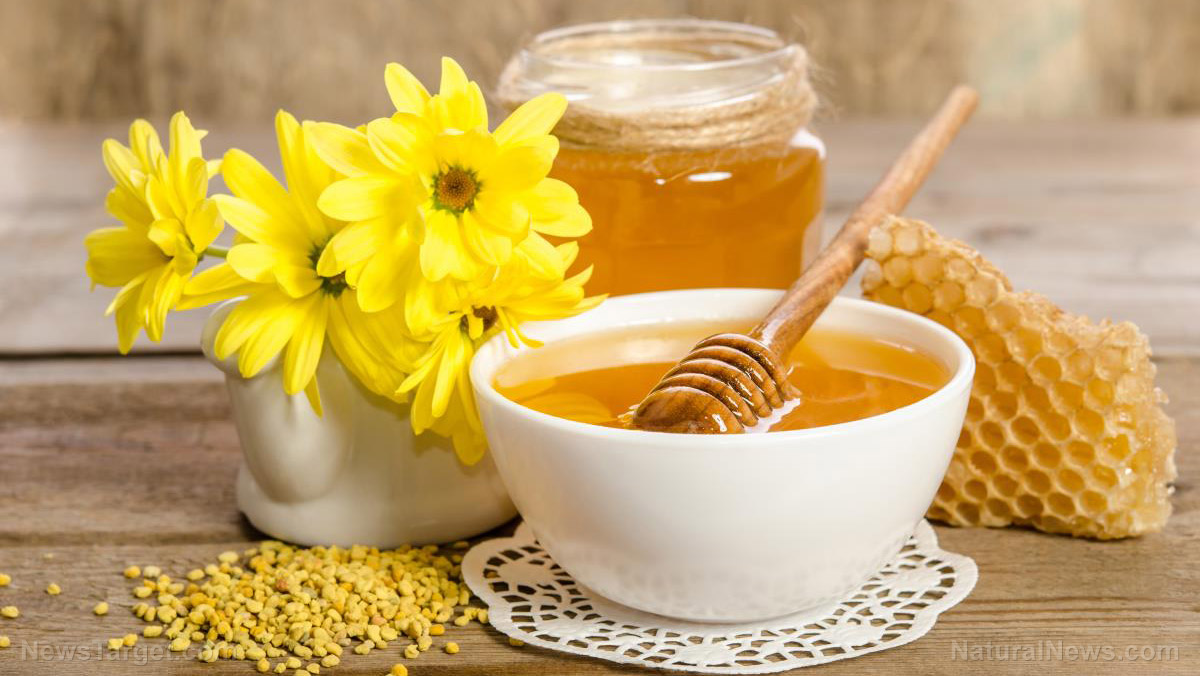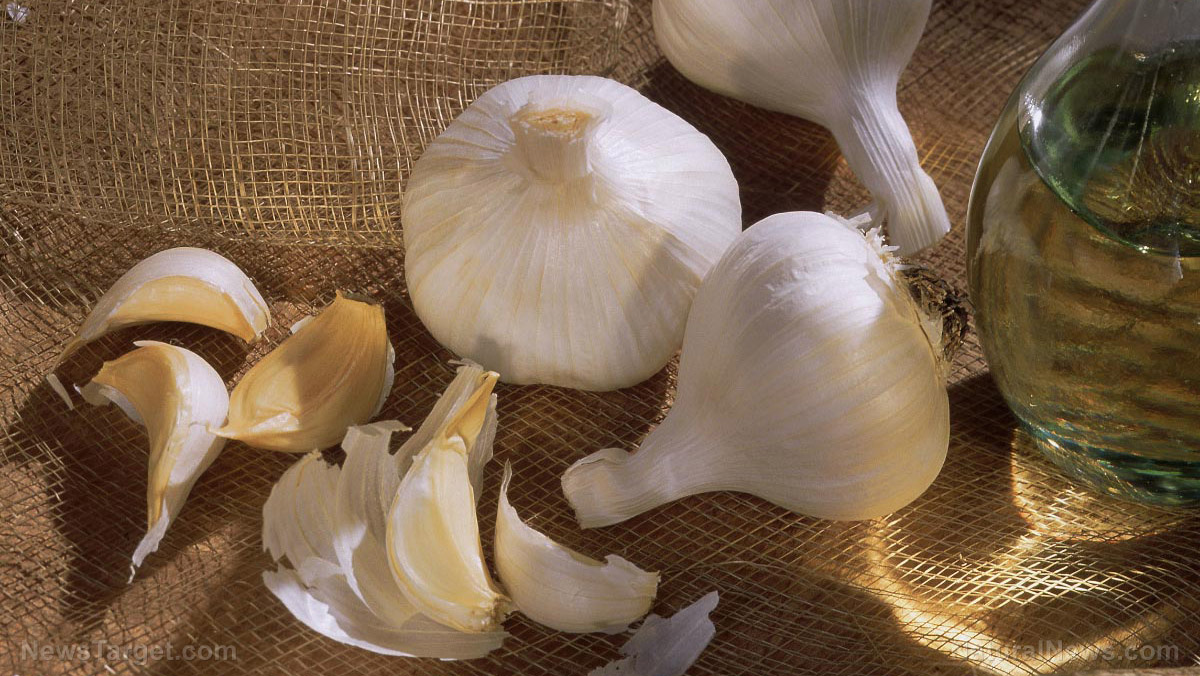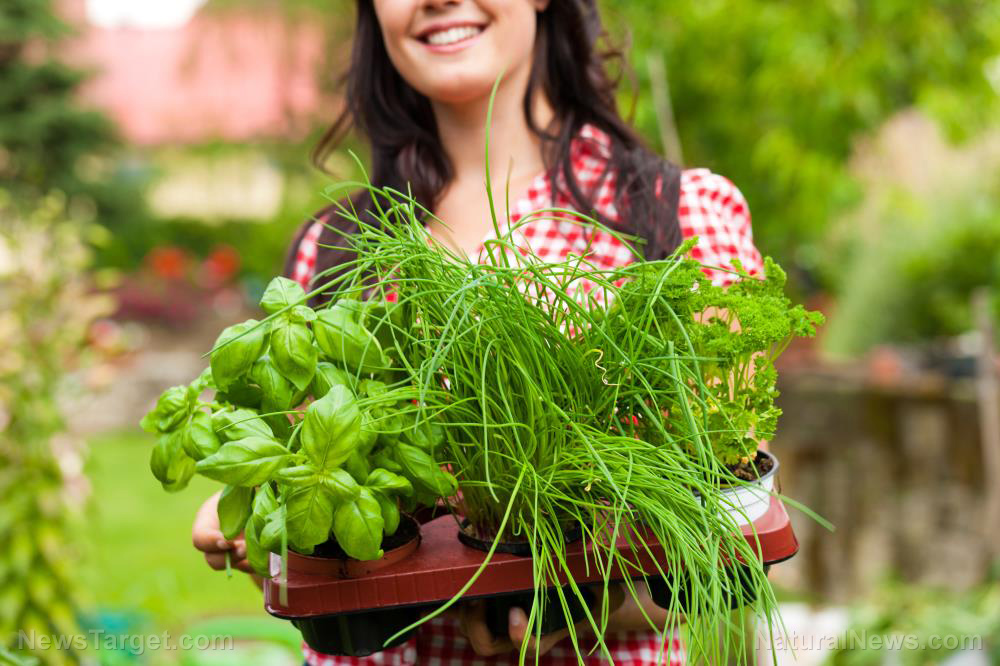12 Food preservation and food storage techniques you can use when SHTF
11/09/2022 / By Zoey Sky

If you want to prepare for a long-term survival scenario or societal collapse, you have to plan ahead and stock up on survival essentials like food and water for your family.
To make things easier for yourself, you can start growing crops in your home garden. You can also learn different methods of preserving food so you have access to healthy fruits and vegetables even when they are not in season. (h/t to ModernSurvivalonline.com)
Proper food storage and preservation techniques help prolong the shelf life of various foods so you can add more supplies to your stockpile before SHTF.
If you are new to any of these methods, keep in mind that you must learn how to use them properly to avoid mistakes that can cause food poisoning.
Here are 12 food preservation and storage techniques you can use when SHTF:
Boiling
When stocking up on liquids for your food stockpile, boiling is ideal because it can effectively kill any lurking microorganisms.
Boiling works the same as other heating methods. When you boil something, you push the temperature of various microorganisms like bacteria, parasites and other organisms past the point they can survive. This kills dangerous organisms and they cease to pose a risk to the integrity and safety of the liquid.
When SHTF, you can use a campfire, stove or other heat sources to achieve the sustained temperature required to boil liquids like water or milk. However, this method requires a lot of fuel, which might not be ideal if you want to conserve your resources.
Burying
Burying is a primitive but effective food storage method that involves digging a hole and burying food in the ground. This method works best when you use certain foods and certain kinds of soil.
Burying preserves food through a variety of mechanisms, specifically by depriving the bacteria that would eat the food of oxygen. The method also helps lower the ambient temperature, eliminates the light that reaches the food and sometimes lowers the pH level of the environment around the food. Burying food may also help draw moisture out of the food.
Note that the drier and saltier the soil, the more effective it will be. You can also bury containers of food in frozen soil.
Read up on different burying techniques for food preservation to make sure it suits the kind of food you want to bury. For example, root vegetables are perfect for burying because they are naturally resistant to spoilage under such conditions.
Canning
Canning is a common food storage method that is often used to preserve fruits and veggies. Canning can also be used to preserve meats and dairy products.
Canning food involves placing cooked or processed food in a sterilized jar that is then sealed. The jar of food is boiled to kill off bacteria that may already be present in the food.
If done properly, the food is stored in an environment where no bacteria can get in. Canning helps significantly extend the shelf life of food, even without refrigeration.
Chilling
Chilling or cooling food helps decrease the rate of decomposition by slowing down the reproduction, growth and action of different microorganisms and the enzymes they produce that cause food spoilage.
While chilling may not be necessary if you have a large fridge and a freezer at home, this method can be used by those who live in cold climates. If you are one of those preppers, you can cool food by storing things in sturdy boxes to protect against animals.
Another option is to use a root cellar or icebox. When the grid goes down, you can cool food by harvesting ice and using an icebox for preservation even without electricity.
Confit
Confit is a method that hails from France and consists of slowly cooking food fully immersed in grease, oil, or syrup at a low temperature.
The food being preserved can also be immersed in its own rendered fat, like if you’re preserving meat. The food is then slowly heated to a relatively low temperature for a long period of time.
Once the food is done, if you’re not going to eat it right away it can be stored in its own cooled and congealed liquid.
Fruits can be turned into confit by cooking them whole or in pieces, especially when preparing larger fruit. Potatoes, tubers and other roots are also suitable for confits.
When meats are cooked in their own rendered fats at a very low temperature, you never go higher than 185 F. Confit-preserved foods can be canned, jarred, or jugged.
Freezing
Freezing prevents decomposition by turning the moisture in food into ice. This helps stop the growth of almost all species of microorganisms that cause spoilage.
One of the biggest advantages of freezing is that you don’t need additional work or preservatives as long as the food remains frozen.
The food needs to reach a stable temperature of 15 F or lower to completely prevent typical bacteria from growing. This temperature also helps significantly extend the shelf life of food.
For extreme long-term storage, freeze the food at an even lower temperature. Note that this may not be practical if you don’t have access to the necessary refrigeration technology.
It’s best to freeze foods with a modest to low moisture content. These items can then be thawed before food prep with minimal loss of taste and texture.
While foods with a high moisture content or delicate consistency may not taste as good as fresh after freezing, they are still safe to eat.
Heating
Heating food helps kill microorganisms that cause spoilage by warming them to a temperature where they can’t survive. Note that after the food has cooled down or heat is no longer applied, bacteria can still continue to grow in the food. (Related: Food preservation 101: A step-by-step guide to air-drying fruits.)
Jellying
Jellying means preserving food by cooking it with ingredients that solidify into a gel form. Gelatin is often used for jellying, but other common ingredients include agar, arrowroot flour and maize flour.
Animal-derived proteins that you can also use include those derived from eels and certain worms.
Jellying is often used in North America to make fruit preserves, jams and jellies. It is also used to make savory jellying preparations like tomato aspic.
While jellying meat or vegetables can still preserve foods at room temperature, they are often cooled via refrigeration or other chilling techniques for best results.
Lye preservation
Lye preservation involves the use of lye and sodium hydroxide to change the pH balance of food. Since lye is extremely alkaline, food treated with lye is rendered too alkaline, preventing bacteria from growing.
This technique is used to make a famous traditional Norwegian dish called lutefisk, which literally translates to “lye fish.”
Similar but less radical methods are used to soften olives, Lye preservation is also used to give bagels and pretzels a glossy, crispy crust while baking.
Pickling
Pickling is one of the most delicious methods of food storage. It involves preserving food in any liquid which inhibits or kills microbes that cause spoilage. It is used to make pickled cucumbers and pickled eggs.
Pickling is great for preppers because it doesn’t require expensive tools. There are two broad categories of pickling: chemical pickling and fermentation pickling.
Fermentation pickling works by hosting “good” bacteria in the liquid used to preserve the food. The bacteria produce an organic acid that acts as a preservation agent.
Fermentation pickling is used to make popular foods like kimchi and sauerkraut.
Chemical pickling uses an edible liquid agent like alcohol, salty brine, vegetable oils, or vinegar. This method used heating to ensure that the food in the liquid agent becomes completely saturated to help eliminate places bacteria could hide in.
Chemical pickling is used to preserve foods like cucumbers, okra, peppers and corned beef.
Here are other fruits and vegetables that you can use to make pickles at home:
- Asparagus
- Beets
- Bell peppers
- Blueberries
- Carrots
- Cauliflower
- Cherries
- Fennel
- Ginger
- Grapes
- Green beans
- Mushrooms
- Onions
- Parsnips
- Peaches
- Peppers
- Radishes
- Rhubarb
- Squash
- Strawberries
- Tomatoes
- Turnips
- Watermelon
Salting/curing
Salting or curing refers to the process used to preserve and flavor meat, fish, or vegetables with salt. Salt helps draw moisture out of the food via osmosis.
Osmosis also increases the amount of salt in the food and simultaneously reduces the potential moisture that it can contain. This makes it hard for microscopic organisms to grow in cured food.
Variations in curing are achieved with the addition of dehydration, smoking, sugaring, nitrates and other processes.
Curing is also a great method for preppers because you can master it with a bit of research and some practice. Use curing to preserve meats and vegetables for your food stockpile.
Sugaring
Like salting or curing, sugaring also draws water from food as it dehydrates and kills microorganisms.
When sugaring, the food is dehydrated first and then packed or surrounded with pure sugar, either in crystal form or in a liquid or syrup form.
Sugaring is often used to preserve fruit, which is ideal for this food preservation method because fruits often have high sugar content. You can also use this method to preserve vegetables, like root vegetables.
One downside to sugaring is you may run out of sugar in a post-SHTF world if you are trying to process a lot of fruits. Additionally, sugar, especially crystalline sugar, attracts moisture. Yeast blooms may occur when moisture levels are sufficient, which can cause fermentation.
Uncontrolled fermentation can cause food spoilage in your stockpile, so use sugaring with caution and store food properly to avoid it.
Learn different methods of preserving food for your stockpile so you can still feed your family after SHTF.
Watch the video below for more tips on how to make pickles.
This video is from the Fearless Nation channel on Brighteon.com.
More related stories:
Food supply basics: 25 Reasons to dehydrate food.
Prepper must-haves: 9 Reasons to stock up on salt before SHTF.
Freeze-drying is one of the best ways to preserve food for long-term storage.
Sources include:
Submit a correction >>
Tagged Under:
emergency food, Food Preservation, food safety, food security, Food storage, food supply, green living, homesteading, off grid, preparedness, prepper, prepping, survival, survival food, tips
This article may contain statements that reflect the opinion of the author
RECENT NEWS & ARTICLES
COPYRIGHT © 2017 OFFGRID NEWS



















